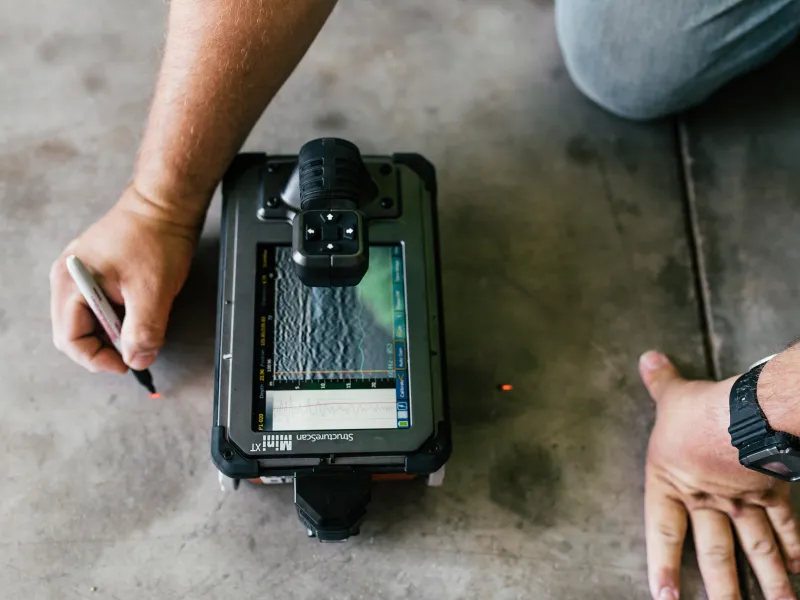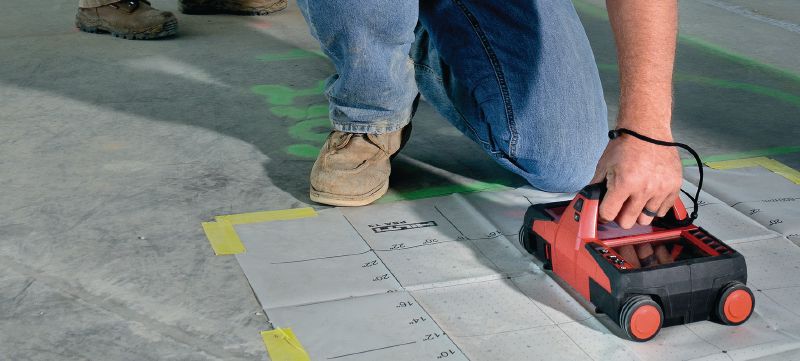Nationwide RainierGPR Service Areas for Advanced Concrete Scanning
Nationwide RainierGPR Service Areas for Advanced Concrete Scanning
Blog Article
Concrete Scanning: A Vital Action Towards Making Certain Architectural Integrity and Safety
In the realm of building and infrastructure maintenance, the significance of concrete scanning can not be overstated. By utilizing advanced innovation and methodologies, concrete scanning serves as a critical device in ensuring that the stability and security of bridges and buildings are maintained to the highest criteria.
Relevance of Concrete Scanning
Concrete scanning plays a vital role in making certain the structural stability and safety of buildings and framework projects. By utilizing advanced modern technologies such as ground-penetrating radar (GPR) and electro-magnetic induction, professionals can non-destructively inspect concrete structures to detect possible issues, spaces, embedded objects, and reinforcement design. This process allows early detection of anomalies that can compromise the stability of a structure, avoiding pricey damages and ensuring the safety of occupants.
Before exploration, cutting, or coring right into concrete, scanning helps recognize the exact locations of rebar, post-tension cables, and other ingrained elements, minimizing the threat of unintended hits that could lead to architectural weaknesses. Additionally, concrete scanning aids in high quality control by verifying the thickness of concrete covers and finding any disparities that might influence the general longevity of the framework.
Technology for Concrete Assessment

Advantages of Early Detection
Prompt discovery of architectural issues can substantially reduce dangers and guarantee the durability of building jobs. By identifying possible issues at an early stage in the construction process, stakeholders can take aggressive procedures to attend to problems before they escalate right into larger and much more pricey issues. One of the essential benefits of early detection is the prevention of architectural failures, which can pose significant safety hazards and lead to project delays and monetary losses.
Additionally, early detection enables prompt repair work and upkeep, which can help expand the life-span of the framework. By attending to issues promptly, building and construction teams can avoid pricey fixings or even the requirement for early replacement of architectural parts. This aggressive approach not just conserves money and time More about the author but additionally enhances the general safety and resilience of the construction project.
Furthermore, early detection can boost project planning and decision-making by offering stakeholders with valuable understandings into the condition of the structure. Equipped with this info, job supervisors can make educated choices relating to building timelines, techniques, and products, leading to more reliable and effective project results.
Making Sure Architectural Stability
Ensuring the structural stability of a construction job is paramount to its safety and longevity. Architectural security refers to the capacity of a structure or facilities to preserve its form and feature under various lots and environmental problems. To attain this, complete evaluation and surveillance of the structure are important. Concrete scanning plays an essential role in making sure structural security by detecting potential issues such as gaps, delamination, or support deterioration that could endanger the honesty of the structure in time.
By using innovative scanning technologies like ground-penetrating radar (GPR) and electro-magnetic induction, building and construction specialists can non-invasively examine concrete frameworks to identify areas of problem under the surface area. This proactive technique permits the early detection of problems or weaknesses, making it possible for prompt repair work or reinforcement to stop architectural failures.
Regular concrete scanning during various building and construction stages and throughout the life process of a framework can aid keep its security, reduce risks, and guarantee the security of passengers. By prioritizing architectural security via concrete scanning, building and construction tasks can Going Here enhance their resilience and longevity, eventually adding to greater safety and security and longevity.
Stopping Vital Failings
Executing regular examinations, such as concrete scanning, can disclose covert problems like spaces, fractures, or deterioration that can jeopardize the honesty of a framework. By using sophisticated scanning innovations like Ground Penetrating Radar (GPR) or Concrete X-ray, designers can non-destructively analyze the problem of concrete and determine weak factors that need support or fixing.

Final Thought
In final thought, concrete scanning plays a vital function in guaranteeing architectural integrity and security by using sophisticated modern technology for very early discovery of potential issues. This proactive method assists protect against vital failures and makes sure the security of frameworks. It is important to prioritize concrete inspection as a basic practice to safeguard the durability and safety and security of structures and facilities.
Concrete scanning plays a vital function in making certain the architectural stability and security of buildings and framework tasks. Additionally, concrete scanning help in high quality control by confirming the thickness of concrete covers and spotting any inconsistencies that may affect the general toughness of the structure. Concrete scanning plays an click for more info important role in making certain architectural security by spotting possible problems such as voids, delamination, or support corrosion that could endanger the stability of the framework over time.

In conclusion, concrete scanning plays a vital role in guaranteeing structural stability and safety by making use of advanced modern technology for early discovery of potential concerns.
Report this page